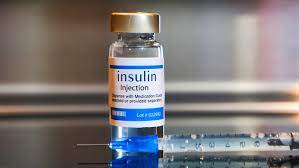|
|
President Roach Pushes for a Vote on Social Security Expansion at Congressional Hearing |
|
Rep. John Larson (CT), House Ways and Means Social Security Subcommittee Chairman, and Alliance President Robert Roach, Jr. urged lawmakers to support H.R. 5723, “The Social Security 2100 Act: A Sacred Trust,” during a hearing on the bill Tuesday. Connecticut Alliance state President Bette Marafino also testified at the hearing.
Rep. Larson’s bill expands and strengthens Social Security, increasing benefits for all beneficiaries by requiring wealthy Americans to pay Social Security payroll tax on wages above $400,000. It will also restore earned Social Security benefits to more than 2 million public sector retirees by repealing the Windfall Elimination Provision and Government Pension Offset.
|
|
|
|
A vote on the bill, which currently has 196 co-sponsors in the House, could come as soon as this spring.
“Nearly 50% of retired Americans today depend on Social Security for half of their income, and one in four Americans over age 65 relies on Social Security for 90% of their income,” said President Roach as he made the case for expansion during his testimony.
“With so many retirees worried about the high cost of their medications and essentials, an increase in their earned Social Security benefits is critical,” added President Marafino. |
|
President Biden Outlines the Ways “Build Back Better” will Lower Drug Prices |
|
President Biden, citing the "outrageously expensive" cost of insulin and other prescription medications, called on Congress Monday to pass his Build Back Better bill, which contains multiple provisions to lower drug prices. |
|
|
In his brief remarks at the White House, the president pointed to the cost of insulin needed to treat Type 1 diabetes, which affects about 1.6 million Americans. |
|
Those with the disease pay anywhere from $375 to $1,000 per month for the drug, but the House-passed measure would cap insulin prices at $35 per month.
Biden's plan would also allow Medicare to negotiate certain drug prices with manufacturers, something now prohibited, and it would cap out-of-pocket costs for some prescription drugs for Medicare recipients at $2,000 a year.
Senate Majority Leader Chuck Schumer (NY) said in a letter to senators on Monday that his goal is to have the measure approved by Christmas, but that deadline may be hard to meet. The Senate's parliamentarian is still reviewing parts of the bill for compliance with the “Byrd rule,” which restricts what the budget measure can contain.
It's unclear what changes some Democratic senators, including Joe Manchin (WV), may demand for their support of the measure, which will require the votes of all 50 Senate Democrats for passage.
If it passes in the Senate, the legislation is expected to be different from the recently House-approved version and would need to go back to the House for final passage before President Biden can sign it into law.
|
|
House Oversight Committee: Drug Prices are "Unsustainable, Unjustifiable and Unfair" |
|
The pharmaceutical industry relies on drug-pricing practices that are “unsustainable, unjustified and unfair,” according to findings from a nearly three-year investigation by the House Oversight Committee.
The conclusions, released Friday, show that corporations studied by the committee raised prices of common brand-name drugs during the past five years by nearly four times the rate of inflation. The report debunks industry contentions that corporations’ price strategy is necessary to put money back into researching and developing new medicines, finding that revenue is substantially greater than those investments.
In addition, analysts with SVB Leerink, an investment bank specializing in health care, have calculated that eighteen large U.S. and European biopharmaceutical corporations will have more than $500 billion in cash on hand by the end of 2022. Because the companies can leverage their assets to borrow additional capital, the 18 drugmakers’ actual capital would be more than $1.7 trillion, the analysts wrote.
Media that covers the industry say that the report indicates the corporations are likely to use much of this windfall to give dividends to shareholders and/or stock buybacks. This also flies in the face of industry spokespeople who often claim their large windfalls are necessary for Research and Development.
|
|
Medicare Beneficiaries’ Telehealth Visits Increased 63-Fold in 2020 |
|
When the COVID-19 pandemic prevented many Medicare recipients from going to their in-person routine medical appointments, the Medicare program responded in 2020 by offering temporary waivers to increase telehealth visits. Those waivers expanded telehealth access into patients’ homes and to urban areas while also including access for 140 additional health care services and additional types of providers.
Although the overall number of Medicare Part B in-person clinician visits declined by roughly 11% from 2019 to 2020, a recent report from the Department of Health and Human Services suggests that the telehealth flexibilities mitigated much of that decline. The report found that the number of Medicare fee-for-service (FFS) beneficiary telehealth visits jumped to roughly 52.7 million in 2020 - 63 times higher than the 2019 figure of 840,000.
The findings also provide evidence of disparities by race/ethnicity and for rural populations, however. Black and rural Medicare beneficiaries reported lower use of telehealth when compared to White and urban beneficiaries. Telehealth use was also found to be higher among states in the Northeast and West, and lower in the Midwest and South.
“Allowing Medicare providers to deliver more care virtually has been important during the pandemic, when seniors were advised to practice social distancing whenever possible,” said Executive Director Fiesta. “But tele-health cannot be a replacement for in-person medical care for older Americans.”
|
|
Thanks for reading. Every day, we're fighting to lower prescription drug prices and protect retirees' earned benefits and health care. But we can't do it without your help. Please support our work by donating below. |
|
|
|
|
Alliance for Retired Americans | 815 16th Street, NW | Washington, DC 20006 | www.retiredamericans.org




